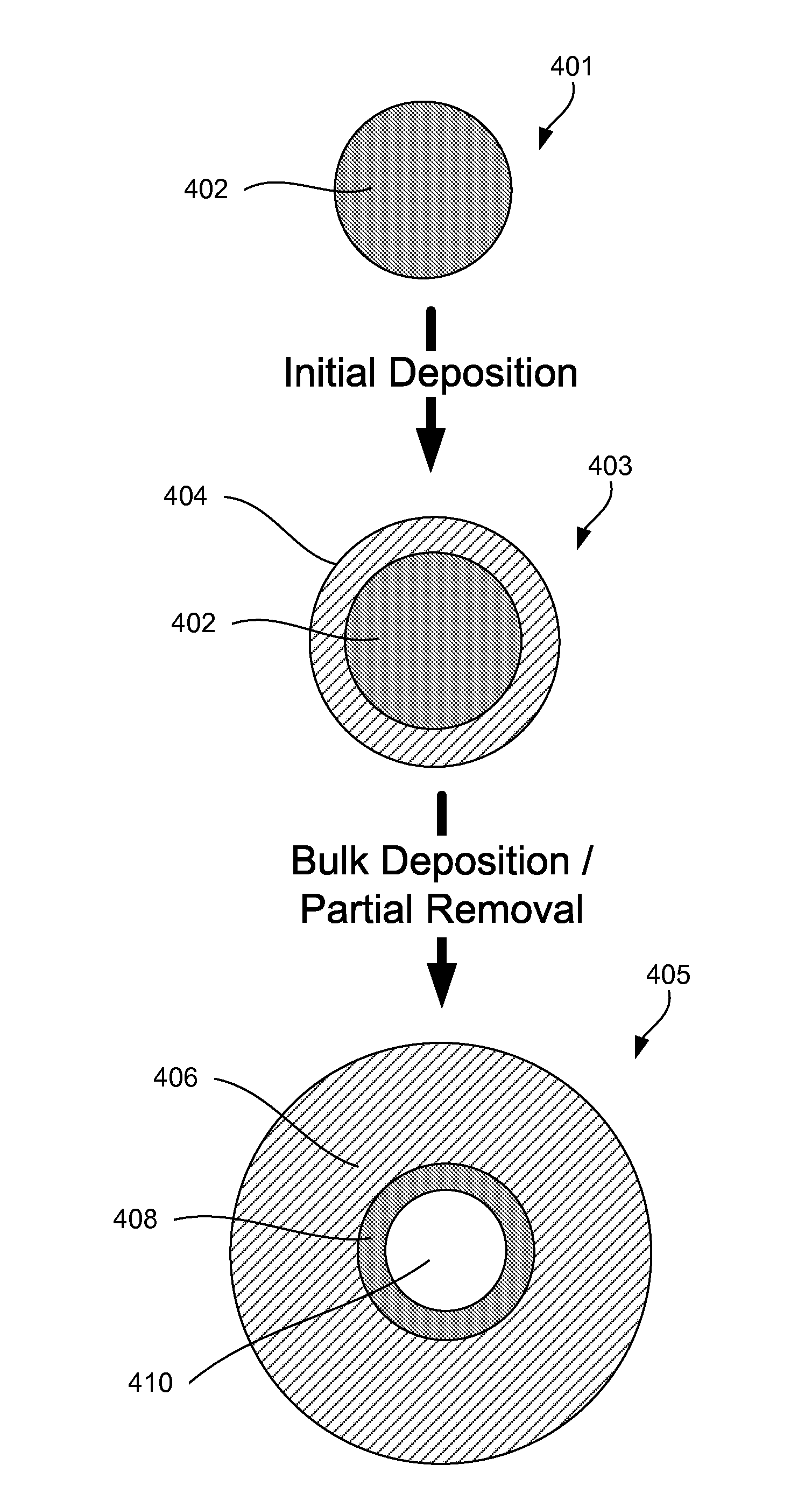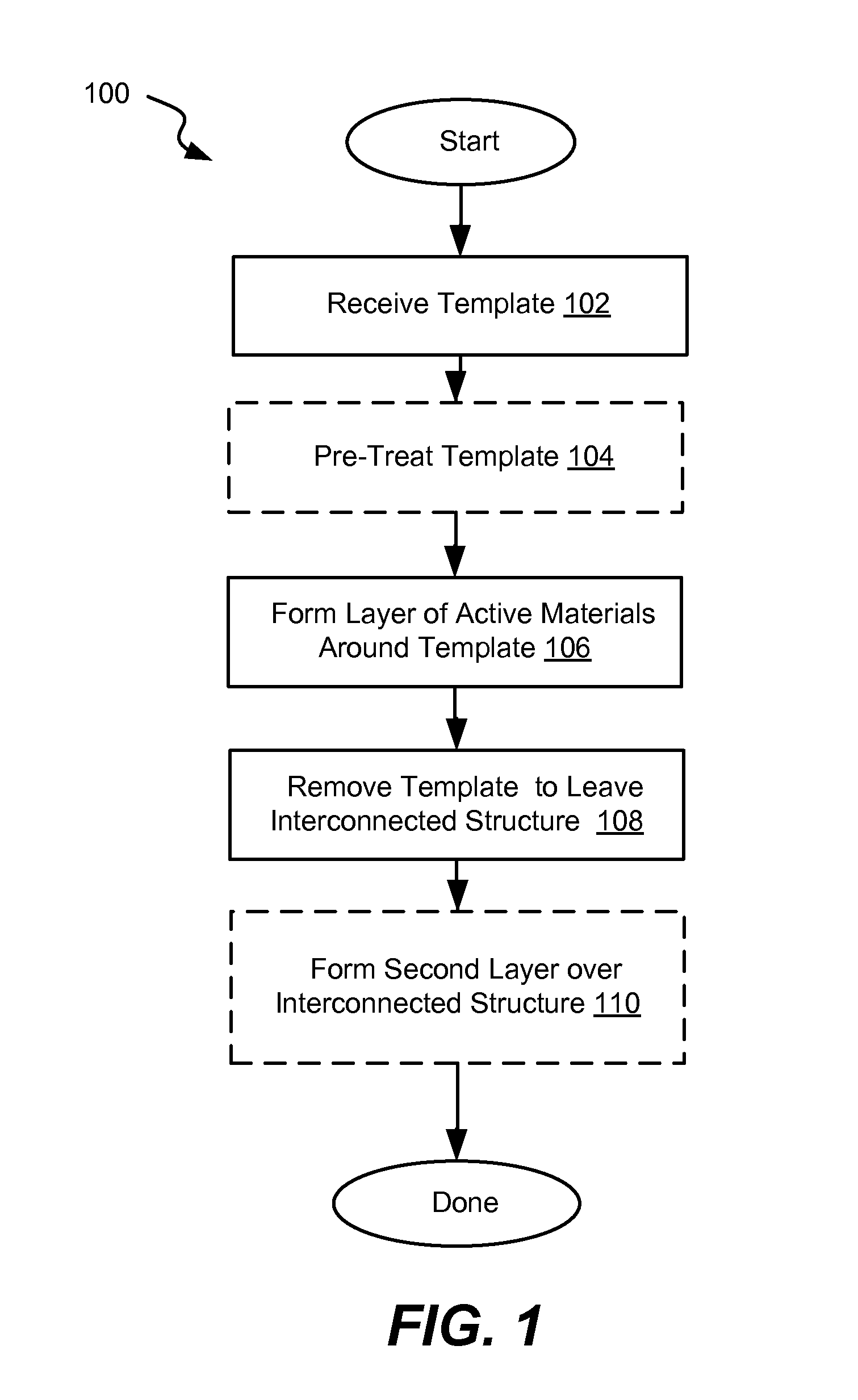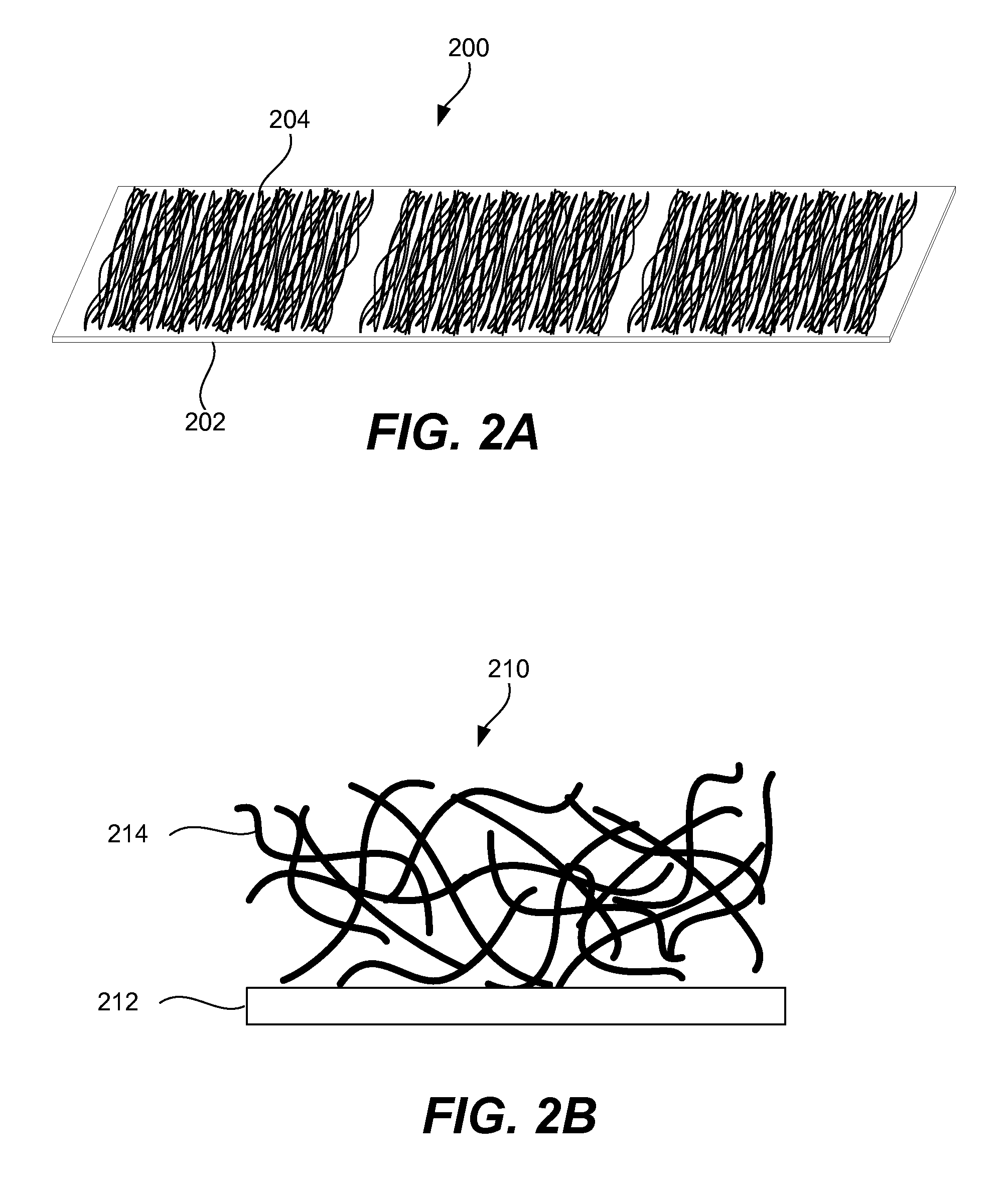Interconnected hollow nanostructures containing high capacity active materials for use in rechargeable batteries
a rechargeable battery and active material technology, applied in the field of interconnected hollow nanostructures containing high-capacity active materials for rechargeable batteries, can solve the problems of difficult mechanical arrangement, electrical interconnection of a multiplicity of nanostructures, and difficulty in producing an electrode active layer containing nanostructures with adequate active material loading, etc., to reduce the risk of pulverization, high capacity, and high surface area available ionic communication
- Summary
- Abstract
- Description
- Claims
- Application Information
AI Technical Summary
Benefits of technology
Problems solved by technology
Method used
Image
Examples
Embodiment Construction
[0025]In the following description, numerous specific details are set forth in order to provide a thorough understanding of the present invention. The present invention may be practiced without some or all of these specific details. In other instances, well known process operations have not been described in detail to not unnecessarily obscure the present invention. While the invention will be described in conjunction with the specific embodiments, it will be understood that it is not intended to limit the invention to the embodiments.
INTRODUCTION
[0026]High capacity electrochemically active materials can be formed into nanostructures for use in rechargeable batteries. Nanostructures tend to deteriorate much more slowly than larger structures during battery cycling. This is because they pulverize less readily and, therefore, maintain electrical contact the electronically conductive current collects of an electrode. Yet, producing an electrode active layer containing nanostructures wi...
PUM
| Property | Measurement | Unit |
|---|---|---|
| porosity | aaaaa | aaaaa |
| porosity | aaaaa | aaaaa |
| length | aaaaa | aaaaa |
Abstract
Description
Claims
Application Information
 Login to View More
Login to View More - R&D
- Intellectual Property
- Life Sciences
- Materials
- Tech Scout
- Unparalleled Data Quality
- Higher Quality Content
- 60% Fewer Hallucinations
Browse by: Latest US Patents, China's latest patents, Technical Efficacy Thesaurus, Application Domain, Technology Topic, Popular Technical Reports.
© 2025 PatSnap. All rights reserved.Legal|Privacy policy|Modern Slavery Act Transparency Statement|Sitemap|About US| Contact US: help@patsnap.com



